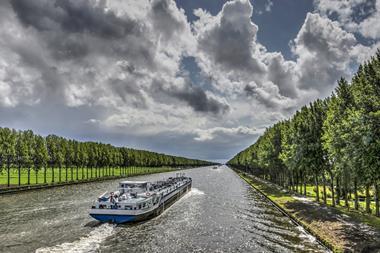SWEDEN – Sweden's second buffer fund hopes to increase its agricultural and timberland investments beyond the current 10% strategic benchmark for real estate, the fund's chief investment strategist has told IPE.
Speaking shortly after the SEK241bn (€28bn) AP2 announced returns of 13.5% in 2012, boosting its assets under management to the highest-ever level, Tomas Franzén said he was "quite pleased" with the results.
He said the fund had "suffered massively" over the last few years, right through the first half of 2012, from a tilt in its global equity portfolio that left the emphasis on Europe, although the situation had now improved.
"The tide turned," he said, referring to the latter half of 2012, where a "solid" equity recovery resulted in a 12.9% return on global equities, improving on the 8.2% loss suffered by the portfolio in 2011.
"There is a little bit of ebb and flow in those things," he said. "Over time, it adds value, but not every year.
"The kind of environment we had last year is not necessarily the hardest challenge to our long-term strategies, to be honest – it is very much a risk-on year."
Franzén, who has been with AP2 since its inception in 2001, also sought to highlight the buffer fund's alternative investments, which he preferred to describe as "non-traditional" to avoid any doubt that hedge fund exposure was the target.
The portfolio, accounting for 15% of assets under management, returned 13.9% last year, above average and second only to the 16.3% returns on Swedish equity.
Franzén said when AP2 initially invested in agricultural land and timber, the proposal was to include the assets in a 10% exposure to real estate – a threshold the fund was now approaching.
He said this would not preclude the fund from further investments.
"We will take a next step, and I would assume we would continue add allocations to those assets," he said.
"I would say agriculture and timber is probably a better diversifier [than real estate]. So, to the extent we find the investment vehicles we think will add the value we expect, I guess we will continue building that as well."
He said a potential change in the strategic asset allocation would see overall alternatives exposure increased alonside the current 10% real estate ceiling – and that the latter would likely be weighted in favour of agriculture and timber.
"As long as we get the kind of investments we have been getting so far, it will be more valuable for us to tilt it towards timber and agriculture," he said.
He also noted that AP2's exposure to Swedish equity fell last year, due to assets being diverted to a bespoke, alternative risk premia portfolio.
Franzén said he was still awaiting a "significant" result from the portfolio, as it was too early to tell, but he seemed positive about its prospects.
"That's one of the things that, going forward, we think will be a good diversifier for the still dominant equity risks in our portfolio," he said.












No comments yet